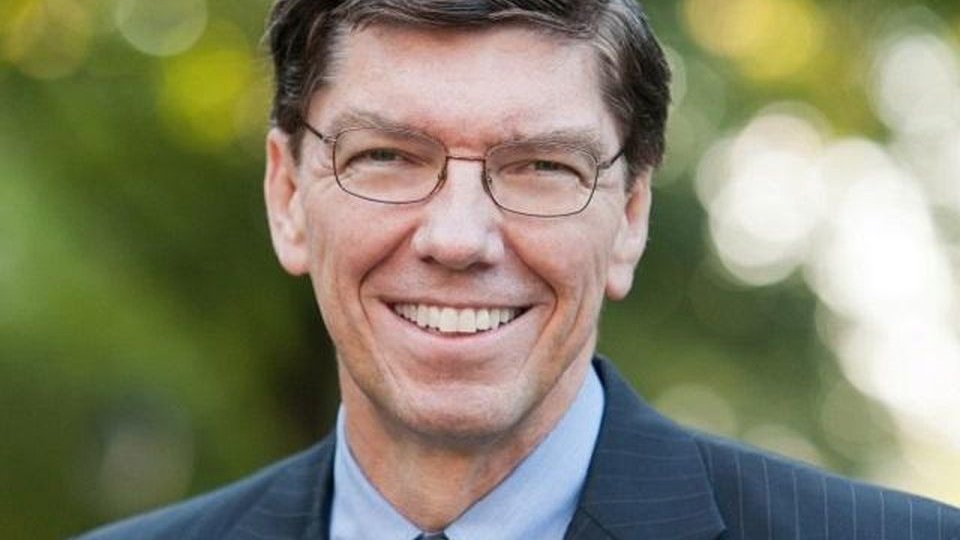

We’re mourning the recent death of Clay Christensen, the Harvard business school professor who in 2005 introduced his “Jobs to be Done” (JTBD) theory, which is all about understanding what your customers really want. Thanks to that theory, Christensen has influenced the way that we do what we do at The SearchLite arguably more than any other single person.
In this age of big data, Christensen was critical of the data-correlation approach taken by so many companies to trying to understand their customers, which he calls “misguided”:
Why is this misguided? Consider the case of … Clayton Christensen. He’s 64 years old. He’s six feet eight inches tall. His shoe size is 16. He and his wife have sent all their children off to college. He drives a Honda minivan to work. He has a lot of characteristics, but none of them has caused him to go out and buy the New York Times. His reasons for buying the paper are much more specific. He might buy it because he needs something to read on a plane or because he’s a basketball fan and it’s March Madness time. Marketers who collect demographic or psychographic information about him—and look for correlations with other buyer segments—are not going to capture those reasons.
Customers “often buy things because they find themselves with a problem they would like to solve,” the Christensen Institute explains. “With an understanding of the ‘job’ for which customers find themselves ‘hiring’ a product or service, companies can more accurately develop and market products well-tailored to what customers are already trying to do.”
Since most people involved in the development of new products don’t think in terms of the jobs to be done, Christensen said, the end up making products that people don’t need or want.
As Forbes contributor Denise Lee Yohn explains it, JTBD “builds on Theodore Levitt’s insight, ‘People don’t want to buy a quarter-inch drill. They want a quarter-inch hole!’”
Setting aside for a moment the non sequitur that Theodore Levitt probably never bought a drill in his life, because if he had, he would’ve said a quarter-inch drillbit, that’s a pretty good summation of Christensen’s idea. People buy products or services not because they want that product or service, but because the product or service solves some problem for them — it “does a job” for them. The product or service addresses the customers’ need: the job to be done.
Finding out what that job is involves real conversations, good open-ended questions, and careful listening.
Christensen’s classic go-to example was the McDonald’s milkshake: The fast-food giant wanted to know how they could sell more milkshakes, so they envisioned the profile of their quintessential milkshake customer and invited people who fit the demographic to come in and taste various versions of the milkshake. Taking the focus group participants’ feedback into account, McDonald’s introduced some changes to its milkshakes, which had no impact whatsoever on milkshake sales.
Christensen liked to quote Peter Drucker as saying, “The customer rarely buys what the company thinks it is selling him.”
McDonald’s brought Christensen and his team in to have a look at the milkshake sales question, and they took a different approach.
“We said there’s just got to be something out there — a job needing to be done — that is causing people to ‘hire’ a milkshake to do the job,” Christensen said. “And we have to figure out what the job is.”
Through a time-consuming process of field observation followed by conversational interviews where they asked open-ended questions (and listened carefully to what they had to say in a very open-minded, human way), Christensen and his team learned that McDonald’s’ milkshake customers were buying their shakes not so much because of the taste or the ingredients, but essentially because the shake helped them get through a long and boring drive to work in the mornings, lasted longer then a donut or similar pseudo-breakfast snack, and was cleaner and easier to deal with in the car.
“If you understand what the job is that the customers trying to do,” Christensen explained, “then it becomes very clear what it is that you have to do in order to nail the job perfectly.”
So they recommended some changes based on what they learned — making that morning “job” easier and better. When McDonald’s implemented those changes, milkshake sales quadrupled.
It’s important to remember that you have to apply JTBD correctly, which means asking the right questions in the right way, including considering context and leaving room for surprises. If Christensen and his team had asked the McDonald’s customers to rank the relative importance of, say, milkshake flavor, temperature, color, and sweetness, they would have gotten an answer, but they never would have found the answer they were looking for.
Peter Aronson
Research Analyst
The SearchLite
Direct Line: 914-662-9057
E-mail: paronson@thesearchlite.com
